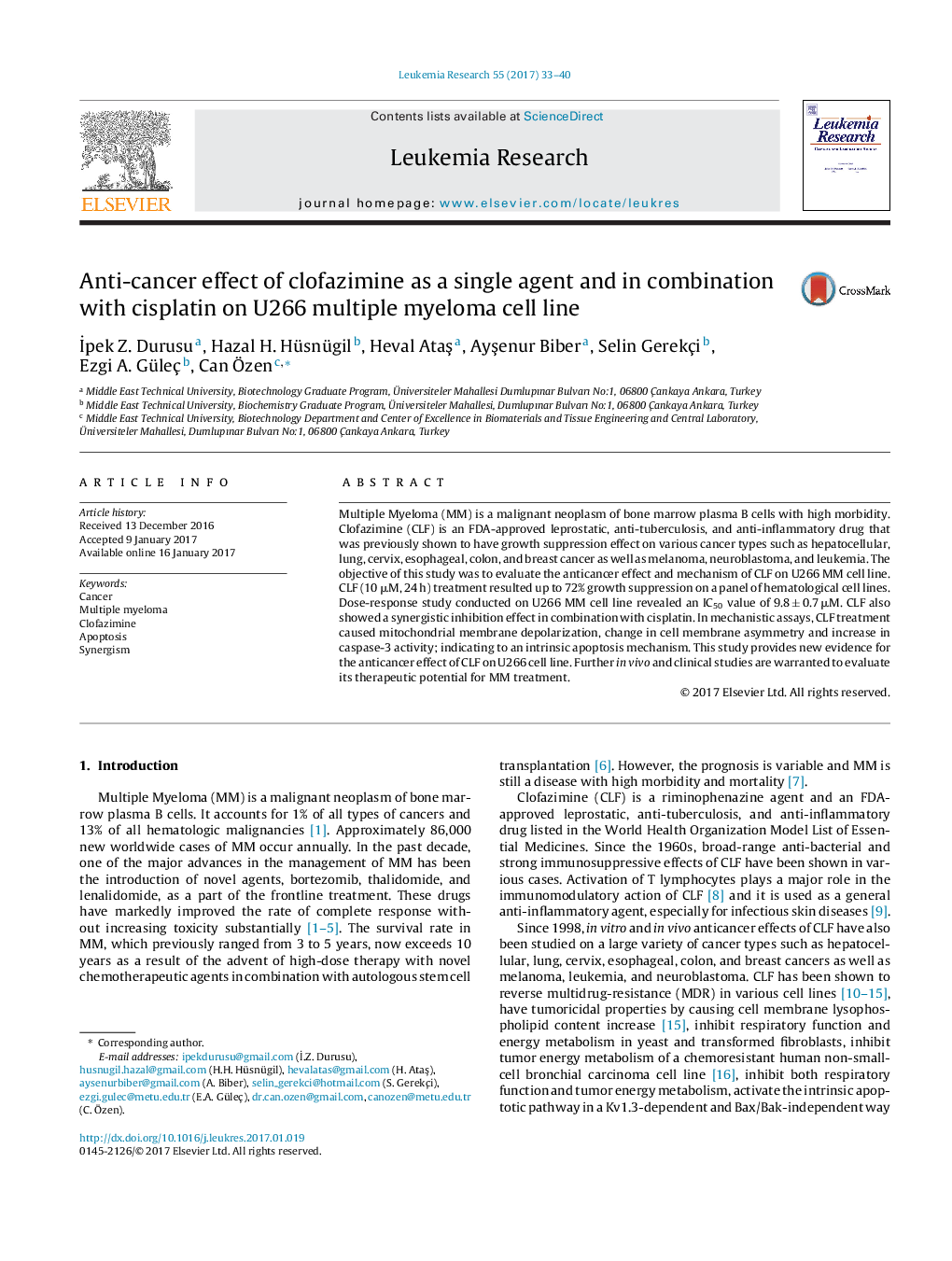| Article ID | Journal | Published Year | Pages | File Type |
|---|---|---|---|---|
| 5527916 | Leukemia Research | 2017 | 8 Pages |
â¢Clofazimine (CLF), a riminophenazine agent, is a leprostatic, anti-tuberculosis, and anti-inflammatory drug listed in the World Health Organization Model List of Essential Medicines.â¢The half maximal inhibitory concentration (IC50) of CLF on U266 multiple myeloma cell line was determined as 9.8 ± 0.7 μM.â¢In combination with cisplatin, CLF synergistically decreased U266 viability.â¢CLF was found to activate the intrinsic apoptotic pathway as supported by flow cytometry and fluorescence microscopy data.â¢Results warrant further in vivo studies to assess the repurposing potential of CLF for multiple myeloma treatment.
Multiple Myeloma (MM) is a malignant neoplasm of bone marrow plasma B cells with high morbidity. Clofazimine (CLF) is an FDA-approved leprostatic, anti-tuberculosis, and anti-inflammatory drug that was previously shown to have growth suppression effect on various cancer types such as hepatocellular, lung, cervix, esophageal, colon, and breast cancer as well as melanoma, neuroblastoma, and leukemia. The objective of this study was to evaluate the anticancer effect and mechanism of CLF on U266 MM cell line. CLF (10 μM, 24 h) treatment resulted up to 72% growth suppression on a panel of hematological cell lines. Dose-response study conducted on U266 MM cell line revealed an IC50 value of 9.8 ± 0.7 μM. CLF also showed a synergistic inhibition effect in combination with cisplatin. In mechanistic assays, CLF treatment caused mitochondrial membrane depolarization, change in cell membrane asymmetry and increase in caspase-3 activity; indicating to an intrinsic apoptosis mechanism. This study provides new evidence for the anticancer effect of CLF on U266 cell line. Further in vivo and clinical studies are warranted to evaluate its therapeutic potential for MM treatment.
